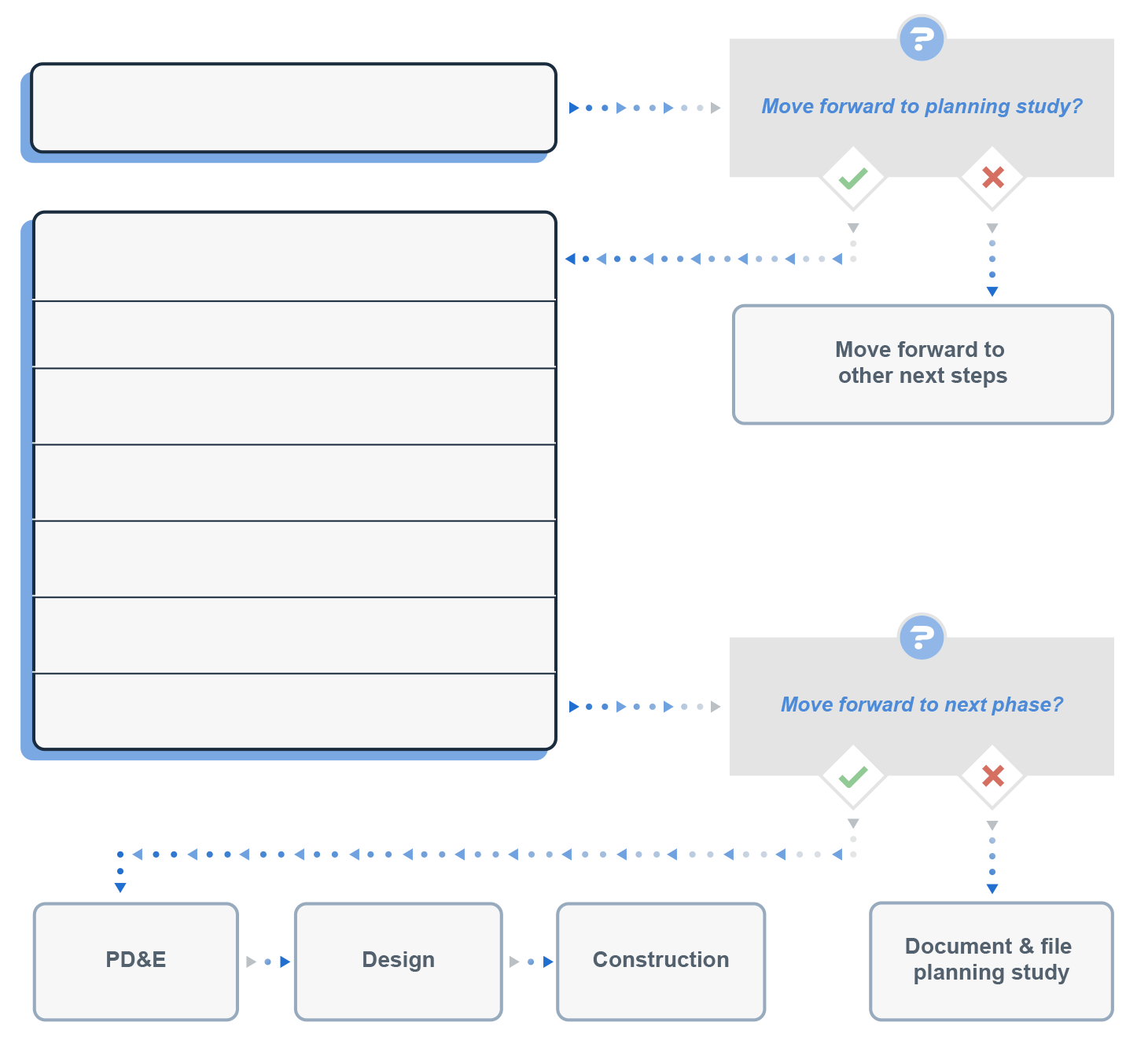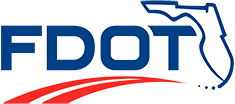Transportation Planning Studies
How Do We Plan?
There are several major categories of activities that take place during transportation planning, as shown below.

- Preliminary Needs Assessment
- Planning Study Components
Preliminary Needs Assessment
Before launching a study or planning effort, transportation agencies must ensure that there is support for the study internally and externally, they must gather preliminary information to determine what has been accomplished previously and what is the starting point for the effort, and they must make decisions about the scope of work, schedule, and budget.
Planning Study Component: Existing Conditions
An existing conditions analysis can help answer the key question: What existing conditions do not meet or support the goals and objectives of the study, and which are inconsistent with the future vision for the region laid out in state, regional, and local plans? The information collected at this stage should not immediately lead to a preferred alternative, but instead should be used to help identify broad issues and opportunities that can be addressed by transportation solutions.
Planning Study Component: Future Conditions
Projections of future conditions can help answer the key question: What trends and projected future conditions are not expected to meet or support the goals and objectives of the study, and which are inconsistent with the future vision for the region laid out in state, regional, and local plans? The information collected at this stage should not immediately lead to a preferred alternative, but instead should be used to help identify broad issues and opportunities that can be addressed by transportation solutions.
Planning Study Component: Issues and Opportunities
In some planning studies, transportation agencies devote significant resources to identifying the major problems and opportunities that could be addressed by transportation investments, management and operational strategies, and policy changes in the study area. They also consider whether there are opportunities to coordinate transportation, land use, economic, environmental, and community/social strategies to achieve better outcomes. Finally, at this stage the study team may develop a compelling preliminary statement of purpose and need for transportation investments.
Planning Study Component: Potential Solutions
At this stage, transportation agencies typically formulate concepts and strategies to address issues and opportunities identified in previous activities. This step may be a continuation of a process, or it may be the first step of a study that builds on previous efforts to document existing and future conditions, project future conditions, and identify issues and opportunities that could be addressed by transportation improvements.
Planning Study Component: Alternatives for Advancement
This stage is a bridge between planning and project development. Transportation planners will identify which project alternative(s) can be advanced in the near term given available funding and support, what long-term strategies can build on these initial investments and policy changes and support the long term vision for the study area, and what intermediate strategies can help advance the study area toward its goals when funding is available and other conditions are in place (e.g., land use changes, demand, or other triggers). This is also an opportunity to consider which options can be coordinated to minimize disruption and improve efficiency of project delivery.
Planning Study Component: Action Plan
Before proceeding into project development, a critical step in the planning process is to document the knowledge that has been developed in the planning process to date so that this information can be used to improve project design and implementation. The information also can be valuable for future planning efforts in the same study area or in the same corridor. This is also the time to decide which transportation agency is best positioned to deliver each alternative and the timeline for next steps.
This framework and the activities that take place in each component of a plan or study are explained further in a draft document that is under continued development and improvement. As part of a broader effort to provide easily accessible planning resources, this website will be continuously updated and refreshed.

